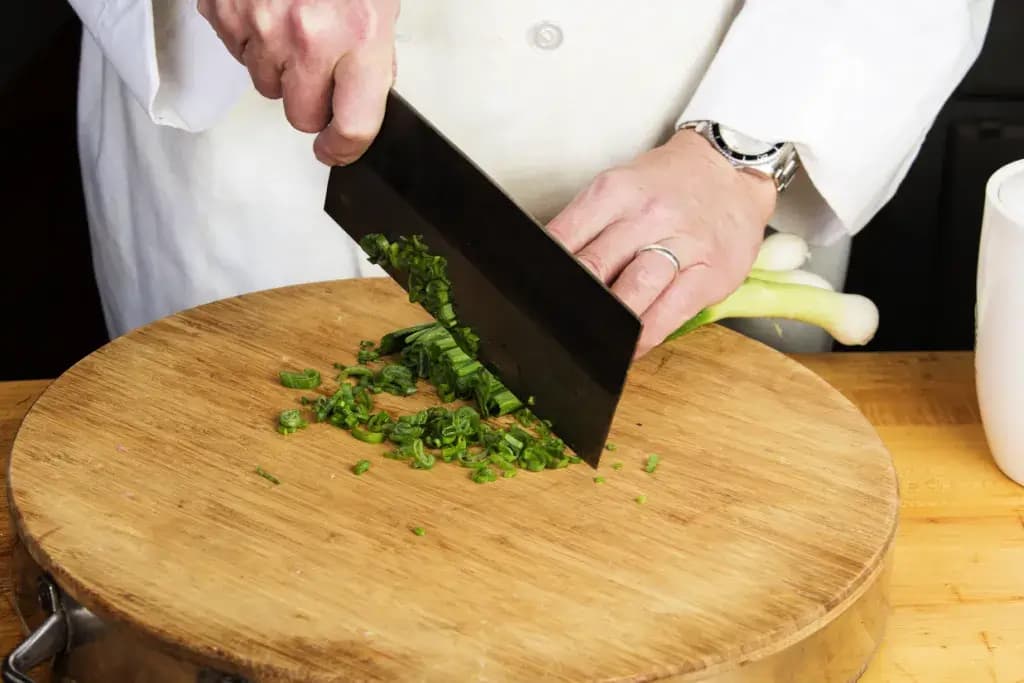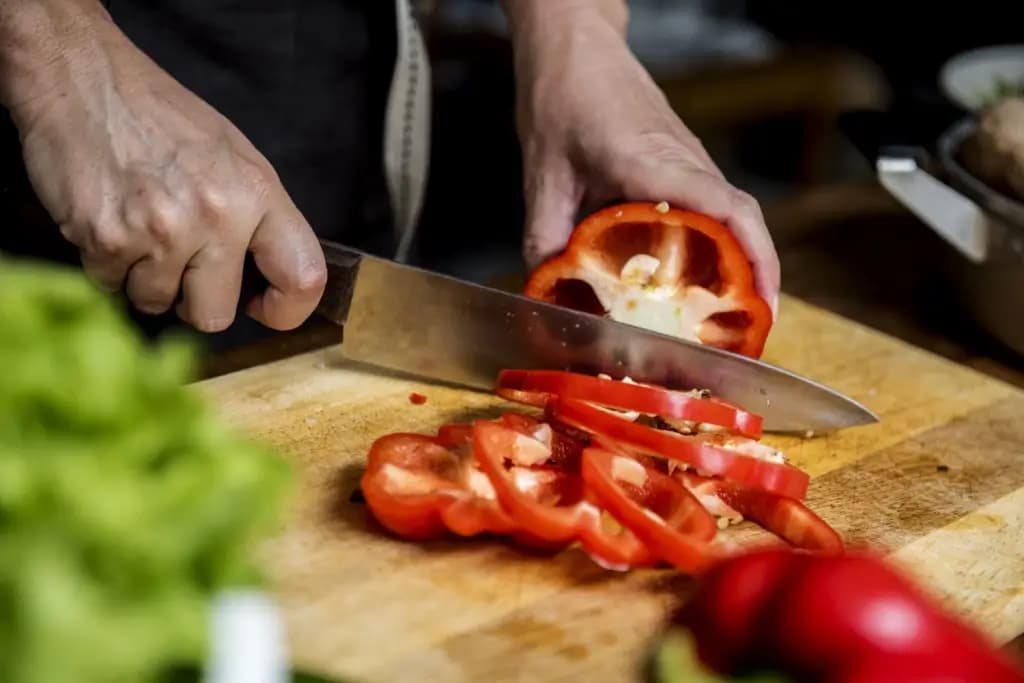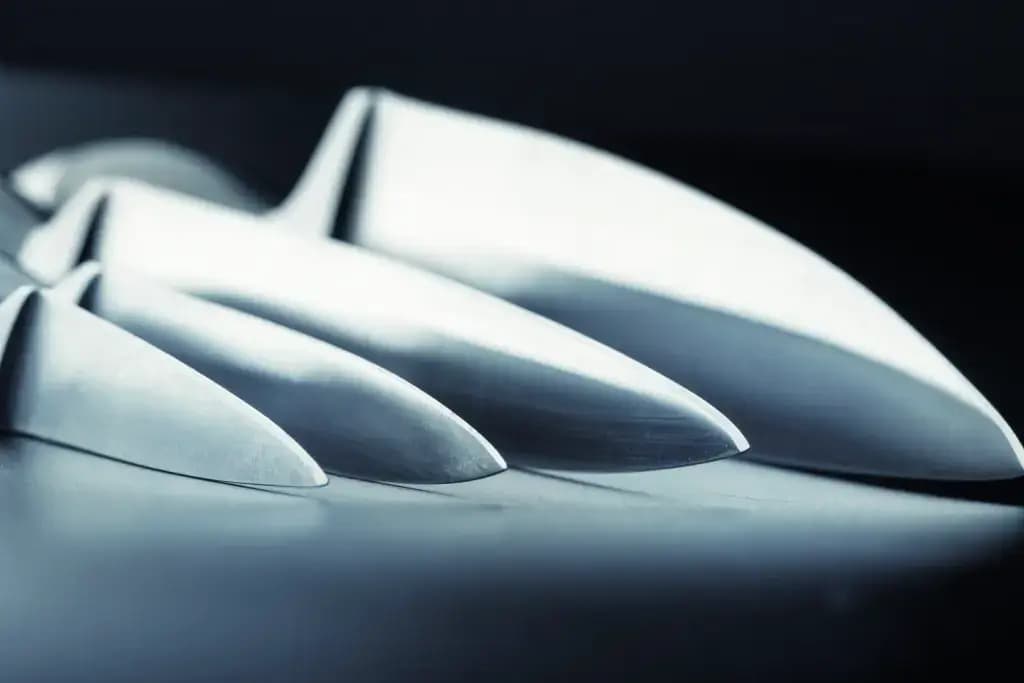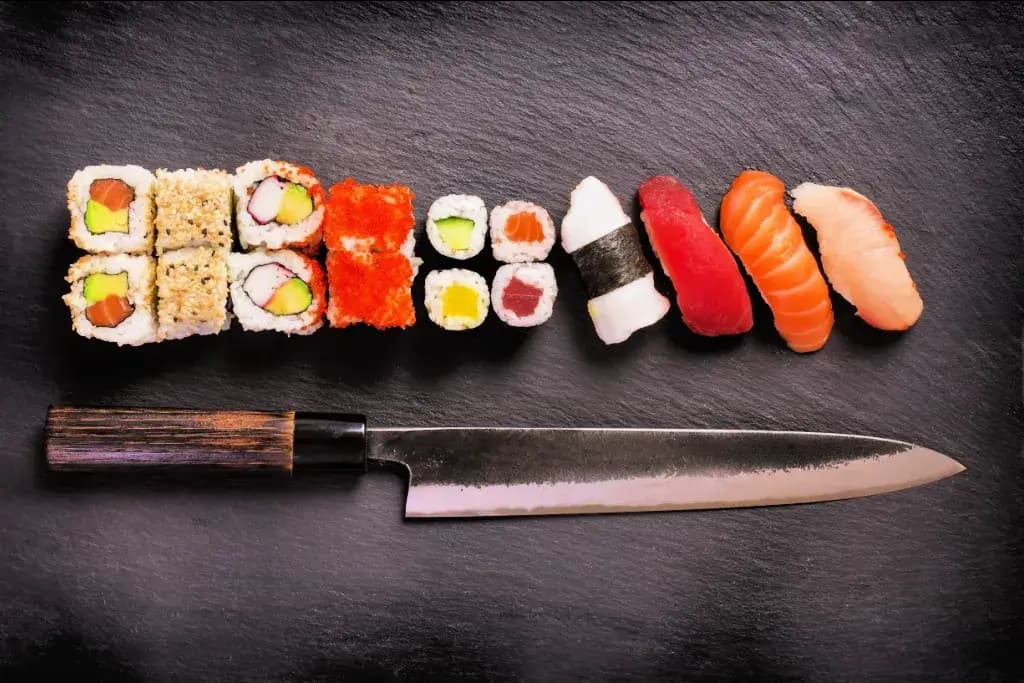

2025 OCTOBER 21
.Thuy Fang
Cleaver Deep Dive: What is Japan’s Chukabocho?
Like many Japanese dishes with foreign roots, different cultures also influence some kitchen tools, and one of them is the chukabocho, also known as the Chinese cleaver.
This knife is a true kitchen multitasker, loved for its power and elegance. Let’s learn more about the unique features of this knife and the common ways to use it!
What is chukabocho?
The chukabocho is a tall, rectangular-bladed knife inspired by traditional Chinese cleavers. It is designed to handle many kitchen tasks. The wide blade also helps protect your guiding hand while cutting. It is an all-purpose knife that combines the beauty of Japanese craftsmanship with the practicality of Chinese cooking tools.
The story of the chukabocho began in China, where the cleaver, or Cai Dao, was used for nearly every cooking task. When this style of knife arrived in Japan in the early 20th century, Japanese craftsmen reimagined it with their own steelmaking traditions. They refined the blade to make it sharper, thinner, and more balanced for precise cutting, creating what became known as the chukabocho.

Made with high-quality Japanese steel, often from Ibaraki or similar regions known for their steelwork, the chukabocho is both durable and rust-resistant. Its rectangular blade is usually seven to ten inches long, making it heavier than a regular knife. The knife’s double-bevel edge and traditional wa-handle allow smooth, safe chopping.
Because of its size and balance, the chukabocho shines in diverse activities, such as slicing vegetables, chopping meat, or crushing garlic. Plus, the tall blade makes it easy to scoop and transfer food from the board to the pan.
Is the chukabocho different from traditional Chinese cleavers?
The chukabocho and traditional Chinese cleavers are distinct, though they share the same shape. Chinese cleavers come in several varieties. The piandao is thin and light, used for delicate slicing. The caidiao is a medium-weight “all-purpose” kitchen knife for daily cooking. The duogudao is the heavy “bone cleaver”, excellent for cutting through bones. Each has its own purpose depending on the thickness and weight of the blade.

The Japanese chukabocho, on the other hand, focuses more on precision and fine cutting. While the Chinese cleaver can perform heavy-duty chopping, the chukabocho is designed for accuracy and control. It uses harder Japanese steel, which stays sharp for a long time but can be more delicate. This means it should not be used to chop bones. Its blade is thinner, often two to five millimeters thinner than most Chinese cleavers, making it lighter and easier to handle.
Another difference lies in craftsmanship. Most chukabocho knives are forged by hand, following the traditional Japanese forging methods that ensure strength and sharpness. Many Chinese cleavers today are stamped from steel sheets for mass production. This gives the chukabocho a more refined, artisanal quality.
Are you looking for amazing knives from Japan? Check out ZAKU! ZAKU has authentic knives handmade in Japan for all of your culinary needs!

How is this Chinese cleaver usually used?
To use it well, start with how you hold it! Gently pinch the top of the blade between your thumb and index finger, just above the handle. This gives you balance and control. Your other hand should curl slightly, letting your knuckles guide the side of the blade. Holding it this way makes each movement smooth, safe, and precise.

When cutting, let the knife’s weight do most of the work. Move the blade in a gentle push or pull motion, rather than chopping straight down. Use the heavier heel to cut through thick vegetables or meat, and the tip for fine slicing. The broad surface of the cleaver can also be used to crush lemongrass, flatten meat, or scoop ingredients from the board into the pan. Once you find the rhythm, cutting with it feels smooth and steady!
After cooking, always wash the cleaver by hand with mild soap and warm water. Avoid leaving it in the sink or washing machine, as this can dull or damage the edge. Wipe it dry immediately with a soft towel to prevent rust from forming.

For storage, place the cleaver in a wooden knife block or hang it safely on a magnetic strip. Never let it bump into other knives, as the edge may chip. With proper care and gentle hands, your Chinese cleaver will stay sharp, shiny, and ready to serve you beautifully for many years.
Why should I have a chukabocho?
The chukabocho is more than just a kitchen tool; it’s a symbol of how two great culinary cultures meet and blend. This Chinese cleaver connects the precision of Japanese craftsmanship with the power of Chinese design, offering balance, control, and versatility in every slice. It brings calm and efficiency to your cooking, turning preparation into a thoughtful, steady rhythm rather than a rush.

For professional chefs, home cooks, and collectors alike, owning a chukabocho means having a reliable and artistic tool that blends design, culture, and skill into one. Have you ever used a cleaver-style knife before? How was your experience? Let me know in the comments!


















